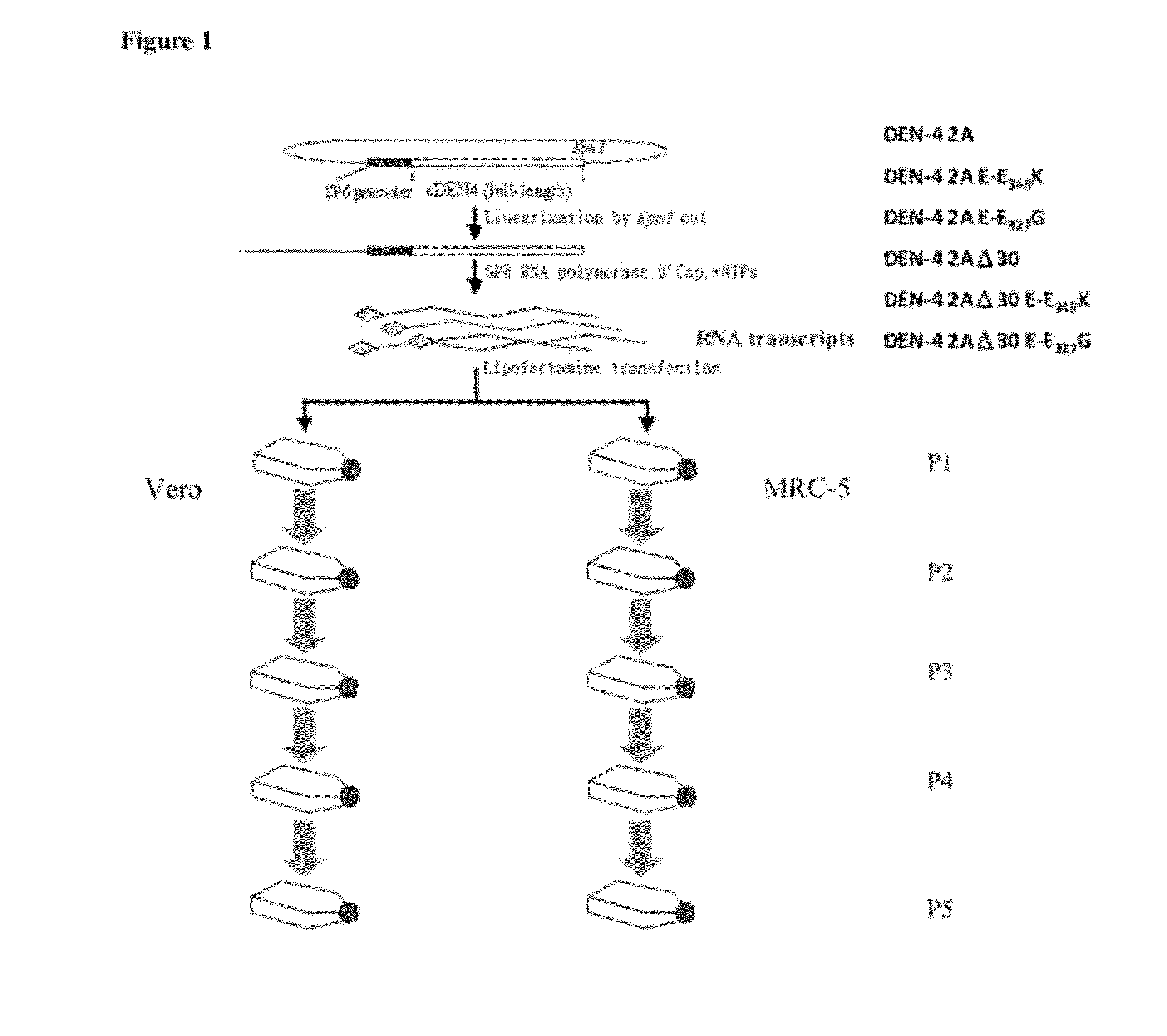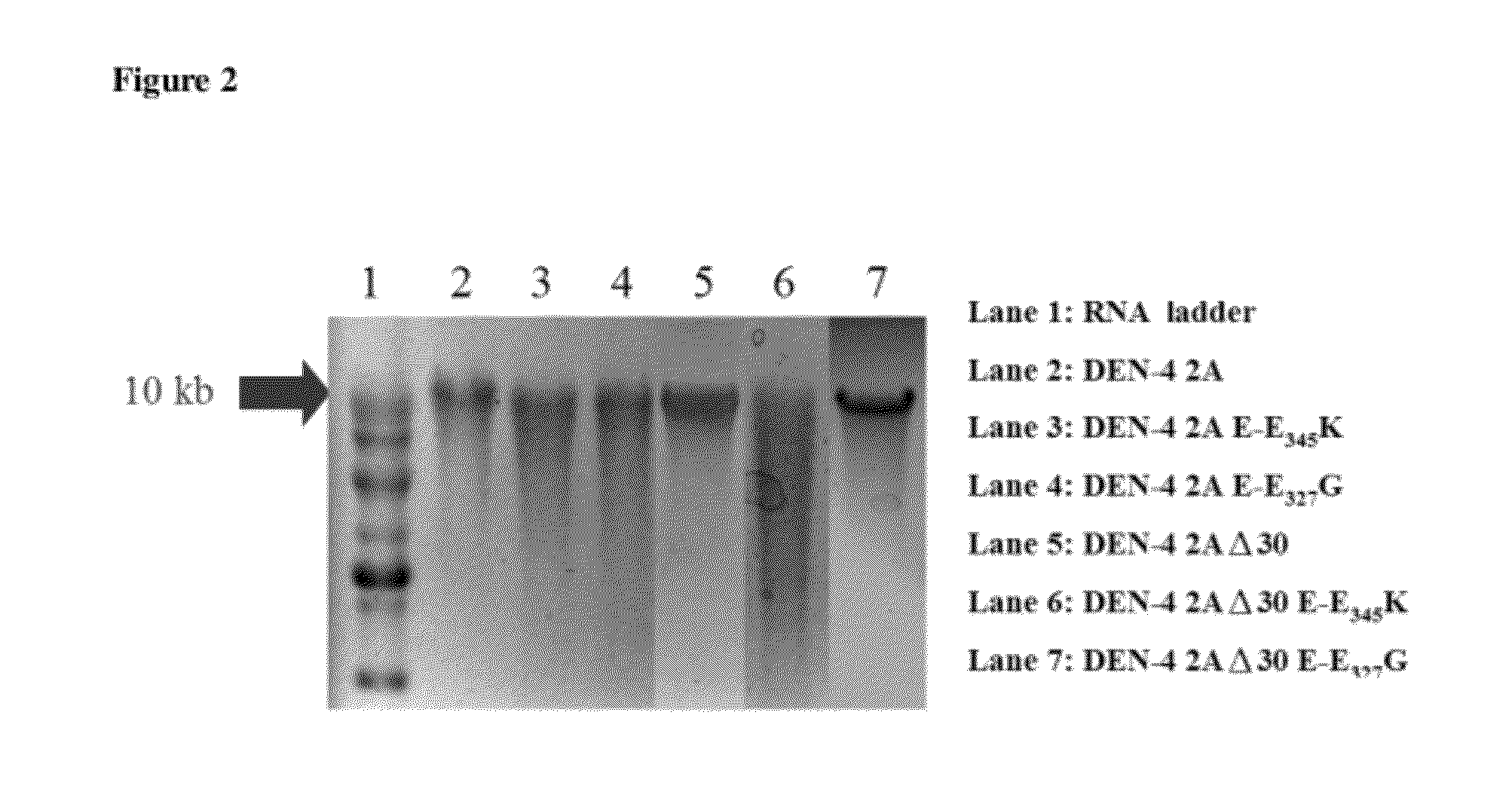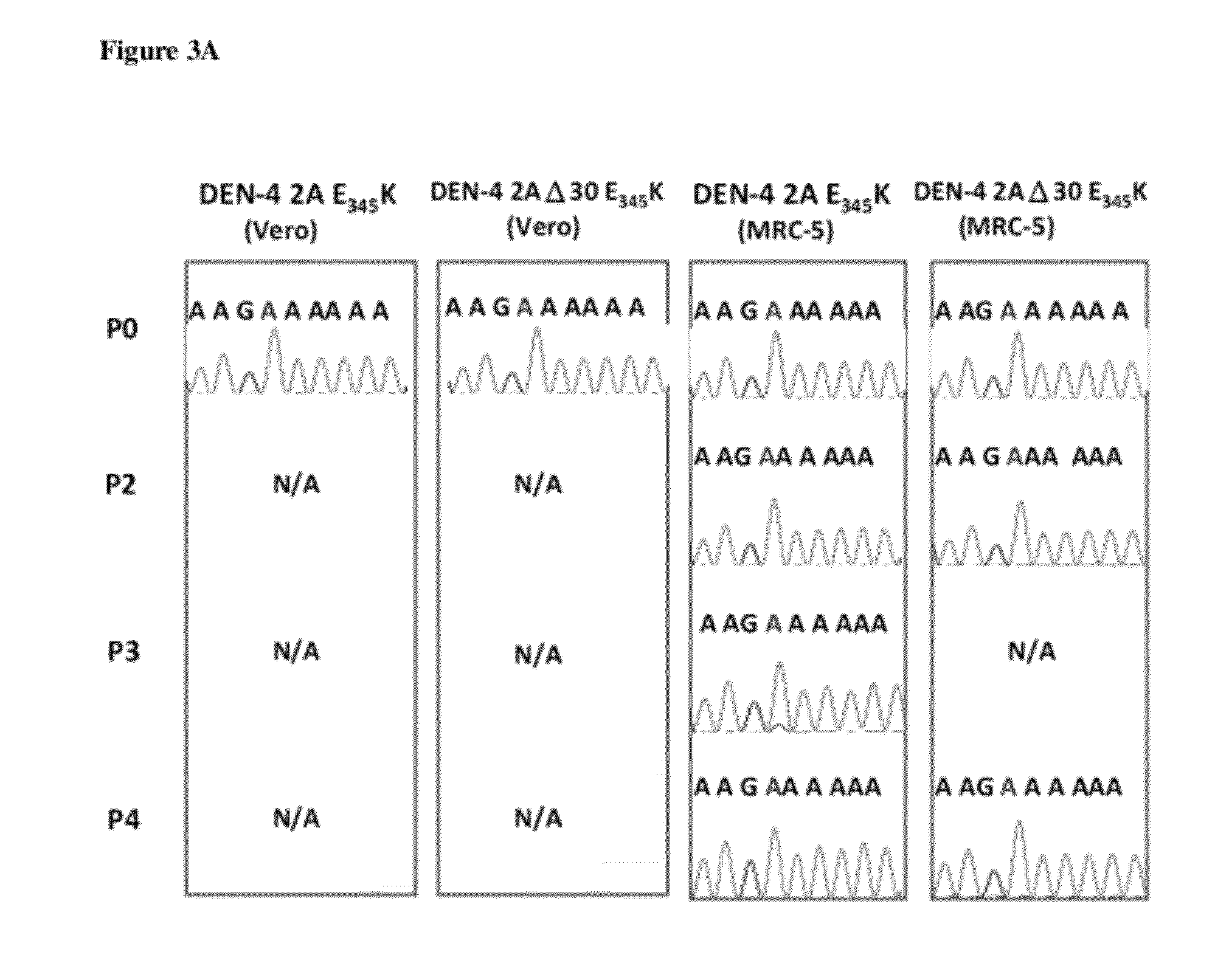Attenuated dengue virus vaccine containing adaptive mutation from mrc-5 cells
a technology of adaptive mutation and dengue virus, which is applied in the field of attenuated dengue virus vaccine, can solve the problems of preventing many vaccine models from advancing past clinical phases, no licensed vaccine is available, and interfere with the virus's ability to replica
- Summary
- Abstract
- Description
- Claims
- Application Information
AI Technical Summary
Problems solved by technology
Method used
Image
Examples
example
Example 1
Mutations of E-Glu345Lys and E-Glu327Gly in DEN-4 2A and DEN-4 2AΔ30 Infectious cDNA Clones
[0026]Target mutagenesis of E-Glu345Lys (E-E345K) and E-Glu327Gly (E-E327G) on two infectious cDNA clones, DEN-4 2A and DEN-4 2AΔ30 was conducted. RNA transcripts were obtained by incubating the cDNAs with SP6 RNA polymerase and rNTPs for 2 h and then the in vitro transcribed RNAs were capped with GTP and 5′-Cap capping enzyme for 1 h at 37° C. (FIG. 1). The in vitro RNA transcripts (P0) were around 11 kb as single bands analyzed by RNA gel electrophoresis (FIG. 2). The RNA transcripts were then transfected into Vero cells and MRC-5 cells individually, and propagated in Vero cells and MRC-5 cells for five consecutive passages (P1, P2, P3, P4, P5) (FIG. 1). The virus stocks obtained from each passage in Vero cells or MRC-5 cells were extracted and RT-PCR for sequencing analysis. The electropherograms show that the mutations of E-E345K of the DEN-4 2A and DEN-4 2AΔ30 clones were not det...
example 2
Replication Kinetics of E-Glu345Lys and E-Glu327Gly Mutation Clones in Vero Cells and MRC-5 Cells
[0027]The E-E345K and E-E327G mutant viruses derived from DEN-4 2A and DEN-4 2AΔ30 clones were investigated in Vero cells and MRC-5 cells. The E-E345K mutant virus derived from the DEN-4 2A clone was only able to grow in MRC-5 cells. No virus titer was detected in the E-E345K mutant virus in Vero cells (FIG. 4). However, the wild type and the E-E327G mutant viruses derived from the DEN-4 2A clone were able to grow in both Vero cells and MRC-5 cells (FIG. 4c-4f). The maximum titers of the wild-type and E-E327G mutant viruses propagated in Vero cells were slightly higher as compared to these viruses propagated in MRC-5 cells.
example 3
Neurovirulence of E-Glu345Lys and E-Glu327Gly Mutation Clones in Vero Cells and MRC-5 Cells
[0028]Since the virus genome may change during cell passages through adaptive selection, and mutations may affect cell tropism and virus virulence. The neurovirulence of the E-E345K and E-E327G mutant viruses derived from DEN-4 2A and DEN-4 2AΔ30 clones was further investigated. The virulence of these recombinant mutant viruses were analyzed in newborn ICR mice. The E-E345K mutant virus derived from the DEN-4 2A clone showed less virulent compared to its wild type DEN-4 2A virus and E-E327G mutant virus in newborn ICR mice. However, DEN-4 2A E-E345K mutant virus still killed 41.7% of the mice, compared to DEN-4 2A E-E327G mutant virus and DEN-4 2A virus killed 68.8% and 92% of the mice, respectively (FIG. 6a). The average survival times of DEN-4 2A E-E345K, DEN-4 2A E-E327G, and DEN-4 2A viruses infected mice were 15.91±2.96, 14.62±2.84, and 8.42±1.21 days, respectively. The E-E345K mutant vir...
PUM
 Login to View More
Login to View More Abstract
Description
Claims
Application Information
 Login to View More
Login to View More - R&D
- Intellectual Property
- Life Sciences
- Materials
- Tech Scout
- Unparalleled Data Quality
- Higher Quality Content
- 60% Fewer Hallucinations
Browse by: Latest US Patents, China's latest patents, Technical Efficacy Thesaurus, Application Domain, Technology Topic, Popular Technical Reports.
© 2025 PatSnap. All rights reserved.Legal|Privacy policy|Modern Slavery Act Transparency Statement|Sitemap|About US| Contact US: help@patsnap.com



